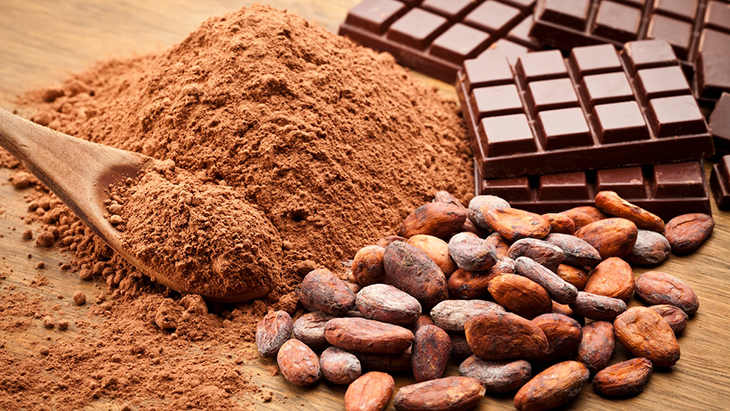9. Cocoa powder and chocolate

We are constantly hearing and reading about the health benefits of dark chocolate. Dark chocolate is high in polyphenols and contains a variety of essential minerals (iron, magnesium, manganese, copper, zinc..). (antioxidants). Some research has suggested (but not proven) that the high levels of polyphenols found in chocolate may reduce inflammation, lower the risk of cardiovascular disease, and possibly even aid cognition or memory. Of course, research on antioxidants is not without controversy, and more research is needed before we can draw any conclusions. Nonetheless, as a result of this promising research, many companies and individuals are already marketing chocolate and cocoa products as a health food. Chocolate is also high in fat and high in calories. Dark chocolate is generally not harmful to one’s health (unless allergic), but it should not be consumed in excess. Dark chocolate, like all foods, can be consumed in moderation as part of a balanced diet (one study suggests 6-7 grams per day as moderate). Furthermore, dark chocolate, cocoa powder, and cocoa beans all contain moderate to high levels of the antinutrient oxalates. You may have come across oxalates while researching spinach or rhubarb. Because of their role in the formation of some kidney stones, oxalates are of particular concern.
They compared the oxalate content of raw cocoa powder made from cacao seeds harvested from pods at different stages of maturity (immature, mature, half ripe, and fully ripe). It is well known that oxalate levels in other plants we consume vary with maturity. For example, the level of oxalate in spinach and kiwi decreases with maturity, whereas rhubarb oxalate levels increase. They discovered that cacao maturity had a minor effect on the level of oxalates in raw cocoa powder. The average oxalate content was 632 mg/100 g dry matter (89 percent soluble oxalate). Soluble oxalate levels were highest (92 percent) at maturity stages 3 and 4, while insoluble oxalate levels were highest (mostly as calcium oxalate crystals, CaOx) at the earliest stages, namely stage 1 and 2.



